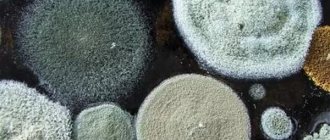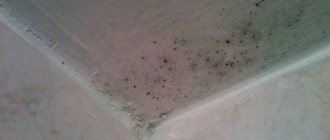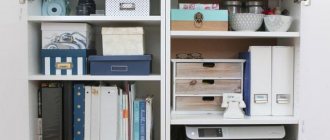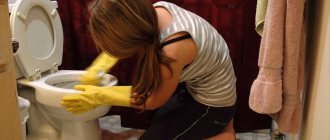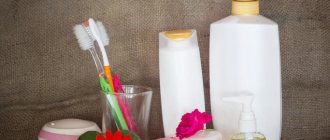Spring cleaning: 15 things in the bathroom that we forget to clean
Cleaning the bathroom is a part of housework that we often ignore. It's probably happened when you moved the cleanser away from your eyes, missing several days, or even a week. After all, there are always more important things to do. But a large number of microbes accumulate on the sink, bathtub and other surfaces, whose secretions can negatively affect our health.
Therefore, cleaning the bathroom and toilet rooms is mandatory. No matter how busy you are, try to do quality cleaning at least once a week. Remember: everyone who enters a bathroom or restroom leaves behind their own unique germs, which instantly end up on toothbrushes, soap, towels and other personal hygiene items. Agree, this is not a very pleasant situation. And even though microbiologists Philippe Tierno and Charles Gerba stated that “our body has a natural immunity that can cope with any microorganism,” maintaining good hygiene is strictly necessary.
Since we can't live in an antibacterial bubble, all we can do to reduce our chances of getting sick is washing our hands frequently and cleaning our home spaces. To save you another headache, we've put together a handy schedule to help you keep your bathroom clean.
How to simplify the process: tips for arranging a bathroom for future ease of cleaning
Irrational design of the bathroom can significantly complicate the hygiene routine. The most vulnerable areas are glossy finishes, voluminous decorations and open shelves.
Smooth finishing materials
Finishing with stone, relief inserts or mosaics complicates cleaning in the bathroom. Dirt and salt impurities are deeply clogged into seams and recesses. Frequent washing with abrasives can damage the glaze on the surface.
To save time when cleaning, you should choose smooth tiles or latex washable paint.
Choosing a bath and toilet cover
White or light-colored floor tiles may suit the design well, but will make cleaning much more difficult. And if dirt and splashes are easy to remove from the ceramic itself, cleaning light-colored seams will take a lot of time.
When choosing tiles, you should choose a non-marking matte coating with a high coefficient of friction.
Convenient storage of small items
It is better to store cosmetics and household products not on open shelves, but in cabinets. This allows you to reduce the cleaning area and eliminate the need for weekly wiping of all bottles. In addition, it is easy to install locks or latches on cabinet doors if there are small children in the house.
Furniture made of plastic is easy to clean and does not suffer from exposure to water, but is fragile and may not be suitable for interior design. Models made of wood, chipboard and MDF require good ventilation in the bathroom and the use of mild cleaning agents.
The use of abrasives and constant high humidity damage the waterproof coating and can lead to rotting of the wood. The most durable and functional materials are glass and metal, however, splashes, stains and dust are clearly visible on shiny and transparent surfaces.
Bath/shower curtain
- clean once a week / change the curtain every 3 months
We have all heard more than once about staphylococcus, which actively multiplies upon contact with contaminated surfaces. So, if you don't clean your bathtub weekly, biofilm can form on its walls. Remember to clean your bathtub or shower at least once a week. And for better surface cleaning, use a mechanical brush paired with bleach - the best cleaning agent for bathtubs and sinks.
As for the shower curtain, it is better to change this attribute every 3 months, since due to excess moisture in the room, mold and lime soap can form on the fabric. Mold, in turn, can cause allergies. So if you notice bouts of sneezing or headaches that are not related to illness, pay attention to your bathroom curtain.
Buy more cotton balls
The hardest part to clean when cleaning is the corners in the bathroom. To remove dirt and limescale, soak cotton pads in cleaning product and apply to stained areas overnight. In the morning, all you have to do is wipe the joints with a wet cloth. Place cotton swabs in the dusty corners of the shower box, which can then be used to remove any remaining dirt.
- 12 things grandparents shouldn't do
- What is lagman - how to cook it correctly and tasty at home using step-by-step recipes with photos
- Mussels in creamy garlic sauce - step-by-step recipes for cooking in a frying pan or oven with photos
Bath mat
- clean once a week and change every 3 months
Usually you get out of the shower and step on the mat. That is why it is considered a high-traffic area, especially when several people use the bathroom. Just like bathroom curtains, rugs need to be replaced every 3 months and washed every week.
Since most specialty flooring materials are typically quite thick and rubberized, it is important to ensure that they are completely dry after use. According to microbiologist Philippe Tierno, “complete drying kills microorganisms and prevents their reproduction and growth.”
How to wash
Let's look at the simplest and most effective techniques for bringing your bathtub to a sparkling state.
White
This inexpensive product is a well-known fighter for clean plumbing. A clear liquid with a strong smell of bleach was used by our mothers and grandmothers who lived in Soviet times. Essentially, bleach is bleach diluted with water and prepared for use. Kills all microorganisms outright, whitens the surface of the bath.
Do not clean a plastic bathtub with white, as bleach can dissolve acrylic surfaces. Another disadvantage of whiteness is that it is a rather caustic and aggressive liquid with an unpleasant odor. Pros: cheap and effective.
Acids
These products do an excellent job of removing heavy stains such as rust and plaque. Acetic, hydrochloric, oxalic or citric acid can make any bath shine. However, it is necessary to take safety measures and, of course, not clean acrylic baths with acidic compounds.
Lemon acid
This product can help remove plaque from the surface of the bathtub. Of course, to clean the bathtub, it is not concentrated citric acid that is used, but its solution. And you don’t need to spoil real lemons for this - just buy artificial citric acid powder, which is sold in confectionery departments.
The acid is dissolved in water - 1 sachet per 300 grams of liquid - and the resulting solution is applied to the surface of the bath. Then you need to give the product time to work. Usually 15 minutes is enough for this. After this, you need to wipe the surface of the bath with a sponge, and then rinse off the product with water.
- Rinse the surface thoroughly after treating with citric acid so that no residue remains. Otherwise, the acid may begin to corrode the enamel.
- Citric acid is also effective when treating sinks and toilets, completely removing plaque from any plumbing fixtures.
- Be sure to wear gloves when handling this caustic liquid.
Domestos
A well-known remedy for combating plaque and rust appearing on plumbing fixtures. The product is safe and recommended by sanitary services for household use. Suitable for cleaning acrylic surfaces.
Vinegar and soda
The combination of these substances, which are found in every kitchen, is deadly for fungus. It is necessary to use the products in a dissolved state, wearing gloves. Inexpensive household products are also great for removing old rust.
Cleaning the bathroom faucet
Toilet
- clean once a week
Better sit down before you hear this.
But, according to Charles Gerb, "there is usually more excrement (bacteria, of course) on a kitchen cutting board than on a toilet seat." You may want to clean your board as soon as possible. But we have a little consolation for you: if you clean your toilet at least once a week, then there is nothing to worry about. Nevertheless, microbiologist Gerba advises cleaning the “white friend” much more often if someone in the family is sick. see also
37 Unusual Ways to Use Coca-Cola
Sink/faucet and handles
- clean once a week/clean every day
Paradoxically, the place where you clean your hands of dirt and bacteria is not itself clean. And if you can wash the sink with detergents at least once a week, then the faucet and its handles should be cleaned much more often, especially if you have children. The truth is simple: the more people touch their hands, the more favorable the environment for the growth of microbes becomes. And what they leave on the surface can have a detrimental effect on the health of your family members.
Cleaning Features
Regular cleaning of the bathroom is determined by the fact that a dirty room becomes a breeding ground for germs that are dangerous to health and looks rather unpresentable.
Features of bathroom cleaning include:
- daily procedures: cleaning the toilet, sink and drains. This will save time in the future, because it is easier to spend 10 minutes a day on a small cleaning than to spend several hours scrubbing surfaces on the weekend;
- purchasing toilet blocks. Each time the water is drained, the contents of the blocks will neutralize harmful bacteria;
- daily disinfection of the toilet rim and lid;
- cleaning sink and bathtub drains. Plums are a haven for harmful microbes, so clean them with special products at least once every couple of days;
- using the bath for its intended purpose. It is better to drain the water after washing the floors into the toilet;
- regular pipe cleaning. It is recommended to do this procedure regularly at least once a month. A large amount of hair and debris accumulates in the drain channel, which can be removed using drain cleaners.
You need to purchase several detergents:
- for disinfecting surfaces,
- from limescale,
- for cleaning glass and mirrors,
- for cleaning tiles;
Towels
- wash every 3-4 days
How often do you change your towels? Most likely, not as often as required by hygiene rules. It's no secret that towels are a breeding ground for bacteria, especially if they are not dried and washed properly. The situation is more complicated if you have a combined bathroom.
Try not to place wet towels close to the toilet. Otherwise, according to Charles Gerba, you risk getting more bacterial excrement on your face by drying yourself with such a towel than if you simply stuck your head in the toilet.
Arm yourself with mouthwash
Teeth are not the only thing that can be cleaned with this product. The rinse aid can return the white color to plumbing fixtures. Pour a quarter cup of liquid into the toilet, leave for 30-45 minutes, and clean with a toilet brush. If there are stains on the walls of the plumbing, rub them with mouthwash.
Toothbrush/brush cup
- change every 3 months/clean once a week
If you are not yet impressed by the information received, then read about toothbrushes. We have already talked about the possibility that splashes of water from the toilet may fall on towels hanging nearby. A similar situation can occur with a toothbrush, so in a shared bathroom, keep the hygiene item away from the “latrine”, preferably in a cabinet. But do not forget to provide them with enough air, because you remember that a wet environment is the best friend of microbes.
see also
A few tips on how to unclog a drain with your own hands
Cleaning and polishing faucets, shower heads and hoses
First of all, you need to think about the accumulation of scale and other foreign matter from the water inside the faucets and showers. In the absence of a filter at the inlet of the wiring or for each individual plumbing fixture, various debris penetrates and accumulates, the situation is aggravated by infrequent cleaning, and in the future even cleaning may not save.
The principle of self-destruction is very simple. Scale, lime, and debris accumulate inside the faucet aerator or in the shower head after poor water purification, causing the outlet holes to become clogged. Further, the metals begin to corrode, whole white-yellow growths form inside and outside, which, if you miss the moment, cannot be removed without using a mechanical cleaning method. But rubbing with sandpaper or piercing plumbing fixtures with air pressure does not always work “without casualties.” Many inexpensive faucets already serve no more than a few years, but with such a radical approach, they immediately break, burst, or crack. Rust, lime, and oxidation corrode weak alloys, and the mixer is thrown away. Therefore, it is worth paying attention to cleaning these accessories more often!
- Mixer. You need to remove the aerator - a small screw-on tip on the spout for spraying water, clean it by hitting it on a hard surface so that all the hard debris spills out. And then rinse under strong water pressure on all sides.
- Shower head. It is necessary to unscrew the spray pad and clean it on both sides. The outer decorative part is cleaned carefully; you can even use a stiff brush on the back side, and punch holes with a steel sewing needle or sharpened wire.
The surfaces of faucets, their taps and levers, shower heads and hoses are cleaned with vinegar solution, alcohol, and plumbing polishes without abrasive particles. Heavy stains can be scrubbed with a hard washcloth, after dipping it in wine vinegar, baking soda solution or a concentrated descaling agent!
Mirror and cabinet
- clean once a week
You can finally breathe out! Of all the places in your bathroom, the mirror and wall cabinet are the ones that you don't really need to worry about and clean daily. But this does not mean that you should ignore them, especially if several people use the bathroom. Keep the surface of the mirror and cabinet clean to avoid heavy contamination.
Buy baby oil
You can make faucets shine when cleaning using moisturizing baby oil. It must be applied to a soft cloth and gently wipe all chrome surfaces. As a result, limescale will disappear and the metal will shine. If the stains are very strong, they must first be wiped with a cleaning agent.
Switches and door handles
- clean once a day
More often than not, we don't wash these items at all. But just think about how many times and how many people touch light switches and door handles every day. The situation is especially aggravated when a large family lives in the house. To prevent the growth of bacteria and get rid of their secretions, wipe the areas daily, ideally using disinfectants.
Original article: How Often Should I Clean These 15 Things In My Bathroom?
Photo: Buzzfeed


